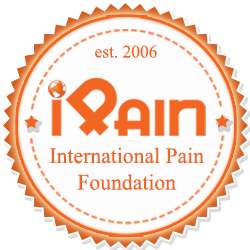Chronic pain is closely linked to restrictions in mobility, anxiety, depression, and reduced quality of life. All these reasons can lead a person who is battling chronic pain to avoid professional and social events, thus increasing the likelihood of anxiety and depression. Designers have a vital role to play in increasing the accessibility of their events to people with chronic pain. By understanding the nature of chronic pain and providing spaces and features that can address symptoms, disabilities, and discomfort, they can remove many impediments that are keeping people at home instead of encouraging them to head outside.
Boosting Accessibility
As mentioned, there is a strong link between chronic pain and limitation in mobility, meaning that event attendees experiencing pain may need to access event facilities in a wheelchair. Designers can make wheelchair movement smoother and easier by ensuring that all entrances have features like step-free access, ramps, and wide doorways. There should also be an option to hire or borrow a wheelchair or scooter should pain arise. Chosen venues for events should additionally have accessible toilets and enough designated parking spaces to accommodate attendees with disabilities. In events taking place over various floors, lifts should be provided.
Resting Spots
Both outdoor and indoor spaces should have spots in which attendees can rest. Benches, sofas, and chairs should all be provided at a relatively short distance from each other so that attendees can stop when needed and catch their breath or rest their limbs. Resting spots should also be provided if ramps are long. These areas must be level so wheelchair users can rest if they are negotiating an uphill ramp. Resting areas must be at least the width of the ramp and a minimum of 5 feet long. They must be present every five meters (16.4 feet) for a 1:12 gradient, 10 meters (32.8 feet) for a 1:15 gradient, and 18m (59 feet) for a 1:20 gradient. There should also be a level area of around 5 feet in length at the base of the ramp.
Flexible Event Schedules
Events should offer attendees the flexibility they need. For instance, organizers can offer frequent breaks, provide different options for participation, and understand that changes in attendance may occur if some attendees are having a difficult day pain-wise. Attendees can also be informed that there will be breaks during scheduled talks, performances, or discussions so that they can rest, stretch, or perform any other exercises that can help them battle stiffness, pain, and other causes of pain. To organize a successful get-together, party, or event, it is vital to inform attendees of all pertinent information that can motivate them to attend. Invitations or brochures should contain information about the location, theme, schedule, and other information that lets attendees know exactly what to expect. Specific information regarding resting spots, breaks, and openness to flexibility should also be included in any invitation or publicity about the event.
Emotional Support
Persons experiencing chronic pain can also be inspired to attend an event if they know there will be emotional support available at the event. Events can provide dedicated activities such as spaces for Emotional Awareness and Expression Therapy (EAET). Within these sessions, attendees can discover the proven power that emotional awareness and expression therapy can have on reducing pain intensity. They can also offer information stands with experts available for consultations on coping strategies, relaxation techniques, and mental health resources that can help them manage the pain and stress that accompanies chronic pain. Finally, organizers can train staff to express empathy and understanding toward patients with chronic pain. Assistance should be on-hand when needed, to ensure that every attendee feels like they are valued. Time should be invested in informing the public that the event embraces and encourages open communication.
Designing a truly inclusive event for people with chronic pain requires a multifaceted approach. It ranges from ensuring full accessibility to providing resting spots and the chance for attendees to stretch or carry out any activity that can reduce their pain. Information also plays a vital role in designing and organizing an empathetic event. Attendees should know what to expect and be informed of any features or spaces that are specifically catered to them.
Author: Jennifer Dawson
Published by: International Pain Foundation, iPain Blog, Team iPain


1 comment
[…] March 3, 2024 Top Posts Finding Relief Inclusivity In Focus Beyond the Pain Navigating Park Trails While Dealing With Chronic Pain The Inflammatory […]